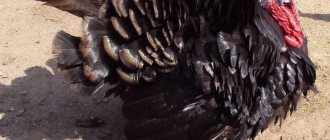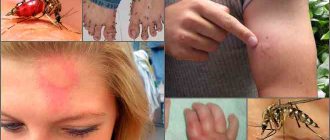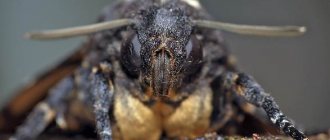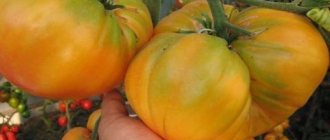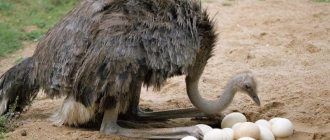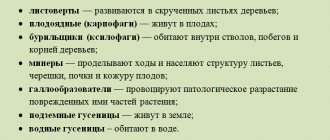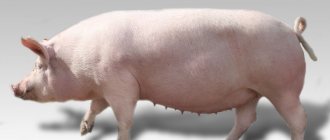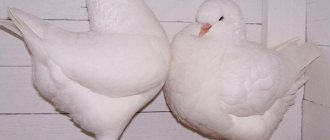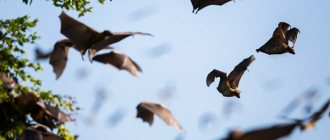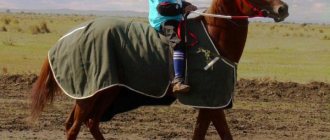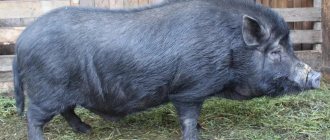Surely everyone has had to flee from wasps at least once in their life. What can we say about the reaction of the majority when a giant almost 5 cm in size appears within sight. It’s scary to even think about what could happen if this monster decides to attack. But it turns out that everything is not so scary. Scolia, or huge wasps, are much less dangerous than their smaller relatives. Let's try to figure out what they can actually threaten, and whether it is worth trying to get rid of these insects in summer cottages.
Description and lifestyle
Wasps, together with their closest relatives bees and bumblebees, belong to the order Hymenoptera.
Numerous insect species share a common body structure. Their chest and abdomen are connected by a thin, stalk-like waist. Adults have two pairs of membranous wings. Large eyes have a complex structure that allows them to see in several directions. Powerful jaws are adapted for gnawing fruit peels, removing bark from branches, and tearing apart prey. The body is covered with many hairs. Movable antennae are an organ of smell and help determine the size of the honeycomb when building a nest. Among stinging insects there are solitary and social wasps. Only some species have the usual yellow-black coloration. For example, the chitinous shell of the lustrous wasp shimmers with a blue, purple and green metallic sheen. German females are densely covered with red hairs and have patterns on their abdomen. The size of the wasp imago ranges from 5 to 100 mm. Insects differ not only in size and color, but also in behavioral characteristics.
Adult wasps, regardless of species, feed on plant foods. They prefer to collect nectar and drink juice from soft, rotten fruits. Protein food is necessary for the growing larvae and the queen. To obtain food, adults have to hunt. The wasp, a polyphagous predator, is useful in controlling insect populations.
Female solitary wasps make nests in the ground or plant stems. They leave food for their offspring in the form of paralyzed insects. Social wasps live in colonies. The colony is ruled by a queen who lays eggs. Worker wasps help care for the larvae and build multi-tiered nests. In the fall, the home is empty; only fertilized young queens survive the winter.
Report No. 2
Wasps are very interesting stalked-bellied hymenoptera, strongly stinging insects; some of their species live alone, some in large colonies. A single wasp lives solitary, may not build nests, all of their adults can reproduce. Species of social wasps build secure nests and live in large families. They reproduce by queen, like their relatives bees; the basis of the colony is made up of worker wasps.
Classification
Specialist biologists distinguish between species of flower wasps and burrowing wasps, the often parasitic wasps and German wasps, extremely skilled pottery wasps. They are very interesting in their way of life among related species of Typhia and Scolia. Most often found in nature are real and paper wasps. Road wasps and sand wasps build their nests in a special way. Everyone has once encountered hornets that buzz loudly and have a menacing bite.
Wasps are loners
These types of wasps can build nests that are very different in location and configuration. Thus, earth-dwelling wasps and similar so-called flower wasps build nests with brood cells in any protected places, attaching them to the walls of buildings. Pottery wasps make their mud nests to look like vases or jugs. Wasps can burrow into the ground, into secluded places under the bark of trees, into small holes and natural depressions. A solitary wasp lays one egg per cell and seals it tightly; adult wasps and brood practically do not interact. The cells for males are often smaller, and as adults they are smaller than female workers.
Social wasps
The life of a social wasp is subject to strict instincts; they build nests according to strict rules and organize the life of the family. The construction of the nest is initiated by the queen, then the hatched females begin to gradually help her, and then generally release her from this duty. The queen gradually focuses only on producing new offspring. By the size of the nest you can always understand how many working individuals live in the family.
The total number of workers in a family of wasps can reach several thousand. In wasps, like other Hymenoptera, there are stages of what biologists call the transition from a solitary wasp to a social wasp. Social wasps that build large nests have natural parasitic enemies. First of all, these are other types of wasps: the German wasp and the glossy wasp, as well as the ichneumon wasp and the hoverfly, can be parasitized.
Class 2, 3 description, species, where they live, what they eat
Description
Large hymenopteran insect. The body length of females reaches 32-55 mm, males - 26-32 mm in length. The main background color of the body is black. The wings are wide, yellowish-brown in color, with a bright purple tint. Their length is slightly less than the length of the abdomen. The anterior part of the pronotum, as well as 4-6 abdominal segments, are covered with bright red hairs. The rest of the body is covered with sparse but long black hairs. The second and third abdominal tergites bear two round yellow spots not covered with hairs. The same yellow spot, but smaller in size, is located on the scutellum. The head of this type of Scolia is round, not covered with hairs, bright orange in color, and shiny. The back of the head is black, matte. The eyes are widely spaced, small simple ocelli forming a triangle. The antennae are located at the bottom of the forehead and are curved. Females have shorter antennae than males.
Similar types of insects
Knowing what a hornet looks like, you can still confuse it with similar winged brothers. These could be wasps, bumblebees, and other types of hornets. The Scolia wasp has a number of differences: it is larger in size and can reach 6 cm in length . Males are slightly smaller than females. But you should focus not only on size.
- Scolia is distinguished by large yellow spots, located on the abdomen in two rows.
- Also, the head has a different color, it is yellow, while the black hornet does not have such “decorations”.
- If you remember about the places where black hornets are found, you can understand that it cannot be found in the central part of Russia. Accordingly, in front of the observer, most likely, it is scolia.
Given these features, it is easy to distinguish between the two insects. An inexperienced observer may confuse a bumblebee and a hornet, or mistake it for a wasp. But the latter has a clearly defined waist, while the bumblebee has a rounded body. In addition, Scolia is distinguished from other similar insects by its gigantic size.
Classification
More than 300 species. Archaeoscolia hispanica known in fossil form
(130 million years, Spain), Protoscolia sinensis (130 million years, China),
Cretoscolia montsecana
(130 million years, Spain) and other species.
- Subfamily Proscoliinae
- Proscolia
Proscolia spectator Day, 1981Rasnitsyn, 1977
- Tribe Campsomerini
- Campsomeriella
Campsomeriella thoracica (Fabricius, 1787)Betrem, 1941
Colpa
Dufour, 1841
Colpa klugii
(Vander Linden, 1827)
(Fabricius, 1781)
(Fabricius, 1781)
Dasyscolia ciliata (Fabricius, 1787)
Bradley, 1951
Micromeriella curreola (Klug, 1832)
Bethrem, 1972
- Megascolia
Betrem, 1928
Megascolia bidens
(Linnaeus, 1767)
(Drury, 1773) - Giant Scolia
Fabricius, 1775
- † Cretoscolia
†
Cretoscolia montsecana
(130 Ma, Spain)
(130 Ma, Spain)
(120 Ma, Brazil)
(120 Ma, China)
†Protoscolia sinensis (130 Ma, China)
- † Archaeoscolia hispanica
(130 Ma, Spain)
(120 Ma, Mongolia)
Is it worth declaring war?
From all that has been said, we can draw an unambiguous conclusion - despite its terrifying size, Scolia is one of the safest representatives of the wasp family for humans. He is of no interest to them, and the attack should only be in self-defense. In addition, the poison they secrete is much weaker than that of most other members of this family. Another undoubted advantage of the presence of skolia on the site is the reduction of populations of pest beetles.
If you think that being around giant wasps is unacceptable, you can try using insecticides. But this method is rather dubious, since scolias do not have nests that could be destroyed. Therefore, getting rid of these insects is guaranteed to be quite problematic. And is it worth doing? After all, they, as a rule, do not pose a threat to humans.
Very often, ordinary bees and wasps, circling around us, cause fear and aggression. What can we say if there is a real giant nearby? But the neighborhood with giant wasps is much safer than with the more familiar representatives of the Hymenoptera. Even if we do not take into account that they protect gardens from pests, these insects are simply incapable of seriously harming humans. Believe me, you can coexist peacefully with giant wasps. To do this, it is enough not to provoke them into aggression.
Megalara Garuda
In 2012, a large wasp was discovered on the island of Sulawesi in Indonesia, which received the name Megalara Garuda, that is, Big Garuda. In Indonesian mythology, Garuda is the king of birds, one of the symbols of Indonesia. The insect, which fell into the hands of University of California entomology professor Lynn Kimsey, was almost seven centimeters in length. In addition to its gigantic size, the monster wasp had powerful jaws that were much larger than its forelimbs.
Megalara Garuda is a predator. Female giant wasps paralyze large insects with their stings and hide them in the ground next to the oviposition site. The emerging offspring feed on hidden prey.
Giant jaws, according to one version, are needed by the insect to protect the nest; according to another, they help the male hold the female during copulation. There is very little information about Megalara Garuda yet. The study of these giant wasps continues.
Meet Scolia
The giant wasp, or Scolia, is more often found in North Africa, the Middle East, and Central Asia. In our country, these representatives of the Hymenoptera family can be seen in the Crimea, the Caucasus and the south of the European part. However, due to gradual warming in recent years, skolia can also be found in more temperate climates.
Despite their frightening dimensions, giant wasps look very impressive. A black insect with bright yellow plaques on its abdomen evokes respect, as well as a well-founded desire to give way. However, giant wasps pose almost no danger to humans and are considered the least organized representatives of the Hymenoptera. Scolia are loners and do not form families, which distinguishes them from hornets.
Female scolias can reach a length of 6 cm
Reproduction
To reproduce, giant wasps use the larvae of lamellar beetles, in which they lay their eggs. Most often these are rhinoceros beetles, beetles or bronze beetles. Having chosen a victim, the female Scolia stings it, injecting poison. This immobilizes and paralyzes, but does not kill, the potential food supply. Then an egg is laid on the living beetle larva, from which the future wasp subsequently hatches. Having attached itself to the body of the victim, it eats it within 10-12 days. As a result, only a shell remains. After this, the Scolia larva pupates, creating a cocoon in which the future wasp spends the winter. In females it is an ellipse up to 3 cm long, in males it is slightly shorter (1–2 cm). In the spring, an adult individual emerges, the food for which, like other wasps, is flower nectar.
Due to the limited mating period of Scolia, they spend most of their lives underground or in the passages of old stumps. Their habitats can be identified by the males of these insects circling around. Having seen several representatives of giant wasps swarming around an old stump, it can be argued that these are males hunting for a mature female. After fertilization, the scolia prepare burrows for future larvae. These structures are a closed space without entrances, exits or long corridors. Under the ground, scolia move chaotically, choosing completely random areas for entry and exit. At the same time, crawling out of the hole where the beetle larva with the egg planted on it is located, the female collapses the passage behind her.
Is there any reason to panic?
Despite their frightening size, Scolia pose much less danger to humans than other representatives of the Hymenoptera order.
- This is primarily due to the fact that they do not have a permanent nest, which needs protection.
- Even if you provoke an attack, it will be an attack by one individual, not a group.
- In addition, the venom of these insects is much weaker than that of bees or hornets, because scoli only needs to paralyze and not kill its victim. Otherwise, the food for the larva will simply spoil.
But this does not mean that giant wasps are harmless. Sometimes even weak Scolia poison can lead to dire consequences. In addition, this insect often uses not only its sting for defense. If necessary, scolias can simply bite with their mandibles. Although there is no poison there, the bite is very painful
It is important to remember that giant wasps only attack in self-defense.
If you do get stung
Most often, after a scolius bite, a person experiences moderate pain and local tissue swelling, but sometimes the condition can worsen. In this case, dizziness, heart rhythm disturbances, vomiting, and convulsions are possible. You need to pay special attention to the condition after a bite:
- children;
- pregnant women;
- people suffering from asthma, diabetes;
- for allergy sufferers.
If you are hurt, the first thing you need to do is calm down. Here is a simple algorithm of necessary actions in case of a wasp sting.
- Wash the bite area with soap and water under running water. This will not only remove dirt from the wound, but also partially wash away the poison.
- Since wasps do not leave a sting, it will be enough to simply disinfect the bite site with any antiseptic.
- Apply a cold compress to the affected area. This will reduce pain and prevent swelling from spreading.
- Take any antihistamine.
- Drink as much water as possible.
Lifespan
Various representatives of the wasp family can live from a couple of months to several years. Species and external natural factors influence how long wasps live. Wasps are conventionally divided into solitary and social; their life spans are different.
Social ones live in a strict hierarchical system, like bees. Singles lead an isolated existence.
Uterus
The long-lived female among social wasps of all species lives for several years. All summer, the queen actively replenishes the population of the nest, continuously laying eggs. Towards the end of August, new, large cells for special offspring appear in the nest. From these cells young females and males hatch.
Before the onset of cold weather, they mate, after which the males die, and the future mothers of the family look for a place to winter. Females hide under bark, remnants of grass, and leaves. How many years the queen will live depends on a well-chosen location. Smart and lucky ones will survive 3-4 winters.
Working individual
Workers are the main population of a wasp hive, females who are not capable of reproduction. The working individual lives for about two months, the composition is constantly updated due to the continuous work of the uterus. By the end of summer, construction is no longer required; the worker wasps have completed their function. They restore order in their summer residence by eating larvae that have not yet been born.
After the act of cannibalism they set off on a journey. With the onset of the first frost, everyone dies. There are theoretical data according to which the queen of some species of the wasp family leaves the nest, dying along with the workers.
Males
In the tough wasp matriarchy, males are not particularly favored. They are born to fertilize females at the very end of summer; with cold weather, certain death awaits them. The lifespan of a male is about a month, with a maximum of 40 days. It all depends on the time of frost.
Pompilid species
Red-bellied road wasp (Anoplius viaticus)
Distributed in central Eurasia. The length of the body of this wasp is from 6 to 15 mm. The chest of the red-bellied black wasp is black in color, its base is covered with felt formed by light short hair. The abdomen is red on the front side, with black stripes. The female of this wasp species preys on the wolf spider. Before hunting, she digs a nest, into which she then drags the paralyzed victim and lays an egg on it.
Crossbill wasp (Batozonellus lacerticida)
The black wasp is large in size, with an average length of 10–21 mm. Torso covered
yellowish spots, the limbs are predominantly yellow-orange, the wings are dark with yellowishness, framed at the edges by a dark border. These wasps hunt, as you might guess from the name, cross spiders. The nests into which they drag the prey are made in the sand. This individual is distributed throughout almost the entire territory of extratropical Eurasia to Japan to the east and in North Africa.
Dipogon hircanum
This wasp is 0.5-1 cm long and has a completely black color. The front wings have a dark spot in the upper corner. The object of hunting for females of this species of wasps are side-walking spiders that live in trees. They create nests in the inner part of shoots or stems. They live everywhere in extratropical Eurasia, east to Japan and Kamchatka.
How to get rid of danger
The sting of a black wasp has unpleasant consequences, it is especially dangerous for children and allergy sufferers. To destroy an insect nest, you can use the following methods:
- Fill the hole with boiling water - 8-10 liters.
- Pour a solution of the insecticide Karbofos, Gett, Troapsil into the nest.
- An adult can be lured into a trap with sweet bait. It's easy to make - you just need to cut a plastic bottle and insert the top part into the bottom, neck down. To attract insects, pour compote or fruit drink.
The black wasp is a beneficial insect, but if it threatens human health, then measures to destroy it are justified and necessary.
Literature
- Key to insects of the European part of the USSR. T. III. Hymenoptera. First part. // Suborder Apocrita – Stalk-bellied
(Arnoldi K.V. et al.) / under the general. ed. G. S. Medvedeva. - L.: “Science”, 1978. - P. 47-56 (Scolioidea - Tobias V.I.). — 584 p. — (Key guides to the fauna of the USSR, published by the Zoological Institute of the USSR Academy of Sciences; issue 119.). — 3500 copies. - Leley A. S. 1981. Wasps of the family Scoliidae (Hymenoptera) of the Far East of the USSR
// Hymenoptera of the Far East. — Vladivostok. pp. 48-50. - Leley A. S. 1995. Sem.
Scoliidae - Scolia // Key to insects of the Russian Far East. - Saint Petersburg. Volume 4. Part 1. pp. 193-196. - Steinberg D. M. 1962. Sem. Scoliidae. Publishing House of the USSR Academy of Sciences, Moscow, Leningrad, Volume 8, 1–186 (Fauna of the USSR. Hymenoptera insects. Volume XIII. New series, No. 84).
- Argaman Q., 1996. Generic synopsis of Scoliidae (Hymenoptera, Scoloidea). // Annales Historico-Naturales Musei Nationalis Hungarici 88: 171—222, 107 figs.
- Betrem JG, 1928. Monographie der Indo-Australischen Scoliiden mit zoogeographischen Betrachtungen. // Treubia 9 (suppl. Vol.) 388 pp., 5 pls.
- Betrem, J. G. & Bradley, J. C. 1972. The African Campsomerinae
(Hymenoptera, Scoliidae). // Monografieën van de Nederlandse Entomologische Vereniging 6: 1-326. - Bradley JC & Betrem JG, 1967. The types of the Scoliidae described by Frederick Smith (Hym.). // Bull. Br. Mus. (Nat. Hist.) 20: 287–328.
- Brothers, DJ 1999. Phylogeny and evolution of wasps, ants and bees (Hymenoptera, Chrysisoidea, Vespoidea, and Apoidea).
// Zoologica Scripta 28: 233–249. - Brothers, DJ and Carpenter, JM 1993. Phylogeny of Aculeata: Chrysidoidea and Vespoidea (Hymenoptera).
// Journal of Hymenoptera Research 2: 227-304. - Carpenter, J. M. 1981. The phylogenetic relationships and natural classification of the Vespoidea (Hymenoptera).
// Systematic Entomology 7: 11-38. - Goulet H & Huber JT: Hymenoptera of the world: An identification guide to families.
// Center for Land and Biological Resources Research, Ottawa 1993, ISBN 0-660-14933-8 - Krombein KV, 1963. The Scoliidae of New Guinea, Bismarck Archipelago and Solomon Islands (Hymenoptera, Aculeata) Nova Guinea, // Zoology 22: 543–651, 42 figs.
Prevention of attacks
Most of the attacks of giant wasps on humans are provoked directly by the victim. A similar thing is observed when he finds himself close to a scolia while working in the forest, in the country, or on vacation in nature. Preventive measures that include the following help to eliminate unfavorable contact with insects:
when going out into nature, it is important to first inspect the territory and, if a problem is detected, change the parking lot; You should not free the territory from scoliosis yourself, in particular with children, pregnant women and elderly people who are extremely susceptible to poison; you should not make sudden movements to drive away the insect, as this provokes a defensive reaction and a bite; You should not walk barefoot on the grass to avoid accidentally stepping on a scolius; food should not be left open, as marinades, alcohol, fruit juices and drinks attract wasps; Do not use strong-smelling perfumes, in particular those with a floral or fruity scent; during the season of greatest activity (mainly August), the windows are covered with mesh; when working in the garden, you need to wear a hat that covers your hair; persons who are allergic, in particular to insect venoms, should avoid potential wasp habitats; When going outdoors, you must take with you anti-allergenic and antihistamine medications, which are recommended by a specialist.
Scolia that have settled near a home or in a country house do not pose a particular danger to people and pets.
But you need to keep in mind that bites sometimes provoke a dangerous reaction. In susceptible people it leads to a state of shock. In particular, bites to the head and neck area are dangerous.
Scolia are the largest wasps in Europe. However, their size should not cause concern. Unlike hornets, giant wasps are not particularly dangerous. In addition, the venom of such insects is extremely weak. If, nevertheless, the insect bites, it is necessary to take emergency measures.
A large insect similar to a wasp with a long body, read more in the article here.
A giant among wasps - the Asian hornet
The largest wasp is Vespa mandarinia, also known as the Asian hornet. It should not be surprising that the title went to the hornet. This insect is a representative of the family of True wasps. Lives in the Middle Kingdom, Japan, Korea. Numerous populations occur in the Primorsky Krai in Russia.
Appearance
The largest wasp in the world reaches 5.9 cm in length, and the wingspan is 7.5 cm. If you sit such an individual on the palm of your hand, the wings will completely cover its surface. It is not for nothing that nature has awarded this species with its impressive size.
Interesting! Large insects tolerate high temperatures more easily. Therefore, the size of the wasp is due to anatomical adaptation to a hot climate. In addition, the insect has an advantage over its relatives, and the giant can hunt larger prey.
What does an insect look like:
- body color varies from rich yellow tones to moderate brown with characteristic black wide stripes and is determined by the subspecies;
- yellow head;
- cephalothorax in black tones;
- on both sides of the head there are huge teardrop-shaped eyes of almost black color;
- In the center of the forehead in the form of a triangle there are 3 additional simple eyes that allow you to distinguish between dark and light tones and help you navigate in space.
Lifestyle
Giant wasps live mainly in forests near bodies of water. The queen hornet is in charge of arranging the new nest, which is typical for all insects of this order. After waking up in the spring, she begins preparing a home for her future family. The female prepares building materials from chewed tree bark, abundantly moistened with saliva. She builds cells from a sticky substance in a very interesting way: she grabs the substrate with her front jaws, presses it tightly to her chest and, biting off a small piece, sticks it.
Interesting! In places where hornets live en masse, almost all trees remain bare without bark.
While the queen maintains her status as a “single mother,” she has to independently prepare food for the larvae. To do this, she is forced to hunt insects and deliver food to the cells. As soon as the working individuals emerge from the first eggs, the queen relinquishes all authority to arrange housing, prepare food, and is only concerned with the reproduction of offspring.
From morning to night, working hornets obtain food for the voracious larvae, whose diet must be enriched with protein foods. Therefore, giant wasps often raid apiaries and can completely destroy an entire family.
Interesting! Each Asian hornet is capable of killing between 100 and 300 bees.
Killer wasps absorb honey, and the killed individuals are taken to the nest to feed the babies. It is worth noting that insects use their giant stings in extreme cases. They effortlessly cope with weak opponents using their developed jaws. It is difficult for beekeepers to resist the powerful force of wasp aggressors, so when they discover a hornet nest, they try to destroy it immediately.
Closer to autumn, population growth stops. The males die off after mating, and the fertilized queen looks for a new wintering place to start a new family next year.
How dangerous are giant wasps for humans?
Careless and ignorant tourists, having seen the largest wasp in the world, try to photograph it. The insect perceives this as aggression and attacks the person. There is no need to worry about the life of the wasp - in a split second it will remove its sting and go on about its business.
But the condition of the victim can be alarming, especially if there are a lot of bites. The only good news is that the wasp is a thrifty creature and uses the poison very sparingly. During one bite, she injects about 2 mg. The poisonous mixture contains many toxic components, as well as a potent poison - mandarotoxin. The sting of a huge wasp is painful and is comparable to piercing the skin with a hot nail.
The following symptoms may appear:
- the appearance of redness, extensive swelling;
- changes in blood pressure;
- cardiopalmus;
- headache;
- cramp, severe pain in the affected area.
With numerous bites, if the victim is not provided with competent, qualified assistance, death is possible. Since even the body of a healthy person who is not prone to allergies is not able to cope with the abundance of poison on its own.
First aid for a victim of an Asian hornet before the doctor arrives is to remove the sting if it is accidentally left, disinfect the affected area and apply a cold compress to relieve pain, burning and reduce swelling.
Help for people with increased allergic reactions
Allergy sufferers, while on vacation, should always be prepared to encounter insects and know the consequences that insect bites will bring them. Must be able to perform basic assisting techniques. If you are allergic to a wasp sting, be alert. Literally, every allergy sufferer should carry with them a first aid kit with a specific set of medications.
The basis of such a first aid kit should be antiallergic (antihistamine) drugs. People with asthma should carry an inhaler with them. After all, its timely use eliminates the occurrence of asthma attacks. Those suffering from heart disease and related diseases should carry cardiac medications with them. A tourniquet is also a must in the first aid kit. If a leg or arm is affected, a tourniquet will act much more effectively as a stopper to harmful toxins than a tight bandage. Allergy sufferers should clearly know the symptoms of allergies. After a bite, you should immediately consult a doctor. After all, medical care is always better than self-medication.
Invader Queens
This insect is unique among all other hornets in that it parasitizes the nests of its fellows:
- At the end of the summer season, the female black hornet looks for a hive of some small species of hornet, fights her way into it and destroys the queen. As a rule, only a few succeed, since soldiers and workers fiercely and completely protect their womb and will never recognize a new womb while the old one is alive. Of course, the individual that was able to capture the nest contributes to the emergence of new black hornets, which more than compensate for the death of the males and females of this species.
- Using special pheromones, the female black hornet, like a chameleon, disguises itself as representatives of another species. The workers determine by smell that this is their queen, whom they serve, and, as if nothing had happened, they continue their work of providing the nest with food and building material.
- After this, the female begins to lay eggs, from which larvae soon hatch. Working individuals, suspecting nothing, feed them until they become adults and ready to reproduce.
- Then swarming and mating occur. The males die, and the fertilized females fly away in search of new nests on which they can parasitize, or, if the cold season is ahead, they look for shelter for the winter.
Very rarely, black hornets build a hive and live together. This behavior is explained by the fact that in the area where they live, there is no one for them to parasitize, so the search for other people’s nests can end in failure and lead to their extinction.
Why is a bite dangerous?
Due to the fact that this insect is a parasite, its poison is stronger than that of its relatives, which are widespread in Russia. This is due to the fact that the female black hornet must kill her rival when capturing someone else’s hive.
Since her opponent belongs to the same family as she does, she is, accordingly, immune to the usual poison of representatives of related species. Therefore, to eliminate the enemy, nature awarded black hornets with additional toxins , allowing them to achieve their goals.
After being bitten by this insect, a person experiences the following symptoms:
- sharp throbbing pain;
- inflammation of the affected tissue at the site of the bite, accompanied by itching;
- dyspnea;
- cardiopalmus;
- headache;
- swelling of the mucous membranes;
- allergic reaction to a bite;
- Quincke's edema is possible;
- very rarely, in 5-6 percent of recorded cases, the consequence of a bite is anaphylactic shock, which ends in death without medical attention.
First aid for a bite:
- An ice compress on the affected area is required.
- To prevent an allergic reaction, take an antihistamine, such as prednisolone or suprastin.
Watch out for hornets
In nature, it is possible to encounter a more dangerous representative of the Hymenoptera - the hornet. Outwardly, it is not much smaller in size than giant wasps, but differs from them in its black abdomen without bright yellow inclusions. Of course, when a three-centimeter insect is circling around with unclear intentions, it is difficult to imagine that you will consider its color. You just need to be a little more careful.
Unlike the practically harmless Scolias, hornets live in families.
And if far from the nest they most often behave cautiously and do not show aggression, then close to these insects they will perceive you as a threat. In this case, an attack may be very likely
However, the conflict can be completely avoided.
A hornet attack can have very serious consequences.
The guard wasps will notify a person when approaching a hornet nest. As a rule, they make several circles around the trespasser. If the warning is ignored, a series of head blows will follow without the use of a sting. Only after this, if the aggressor continues to threaten the nest, an attack follows.
It’s more difficult if the hornets’ nest is located on the territory of a summer house or garden plot. In this case, it is impossible to predict what will provoke the insects to attack. And given that the hornets’ venom is much stronger, the consequences of their bites can be very serious. The danger is also increased by the fact that several individuals are most often involved in the attack. At the same time, the dose of poison increases, which often provokes the development of an allergic reaction. If you have been stung by a hornet, or even more so, several times, after providing emergency assistance, you should immediately contact a specialist.
Are they beneficial or harmful?
Insects of this family are not particularly dangerous to humans. They bite on rare occasions, but the venom is weaker than that of other wasps and bees. In general, Scolia is an insect useful for agriculture, despite the fact that it is a predator. It destroys pests of different crops.
Such insects are specially imported if it is necessary to protect sugar cane plantations or orchards, vineyards, and coconut palms.
Scolia larvae bring significant benefits, since they infect the offspring of harmful insects. However, adult individuals are also effective in the fields, as they pollinate plants: they feed on nectar and pollen. They only do this selectively, because the structure of their body does not provide for the ability to penetrate into the deep corollas of flowers.
Interesting video: The real monster is the Scolia wasp
Bite danger
Contact with any wasp (paper wasp, black hornet, etc.) can lead to the development of an allergic reaction. A single injection of a toxic substance is not enough to develop serious consequences, and one cannot expect an attack by a large number of scolias, since they live alone. However, caution should be exercised if an insect of this species is found nearby. Its bite is quite painful. In addition, a similar reaction may occur as after contact with an encephalitis tick.
With increased sensitivity of the body, a severe allergy develops as a result of the bite of one adult wasp, but this happens much less frequently. Possible symptoms upon contact with scolius: dizziness, convulsions, vomiting, arrhythmia. The worst case scenario is anaphylactic shock.
The victim may lose consciousness. People of certain groups are at risk:
- Children;
- Pensioners;
- Pregnant women;
- Suffering from asthma, allergies, diabetes.
The main reason for a Scolia bite is self-defense. This means that direct contact with insects should be avoided.
This species lives in Burma, India, China, Korea, Thailand and Japan. There are very few of them in Russia, so much so that they are listed in the Red Book of the Trans-Baikal Territory. In addition, sometimes such hornets are found in the Primorsky Territory and the Amur Region.
Interesting fact: despite their apparent small numbers and rare human encounters with them, black hornets are not an endangered species. Simply because of the peculiarities of their biology, they are not perceived by people as widespread insects, including in their main areas of residence.
Scolia - the most beautiful large-sized wasp
The huge Scolia wasp is a striking specimen among giants, the titled giant of Europe. The extensive family includes hundreds of species, but the most interesting is the giant Scolia. The heat-loving insect lives in southern countries, southern Europe, the Caucasus and Crimea. As the climate warms, the distribution boundaries of the huge wasp are expanding. Scolia are not found in cold regions because the larvae have no chance of survival in cold soil. The insect is listed in the Red Book.
Characteristics
A very large wasp grows up to 5.5 cm. On average, the length of females ranges from 4-5 cm. Males are somewhat smaller and their sizes do not exceed 25-32 mm. Nature did not spare the colors when painting the scolia. The main background of the body is black. The yellow dorsal shield and spots on the abdomen of the same color stand out in contrast. The body is densely covered with hair, on the chest it is black, the last segments of the abdomen are surrounded by yellow and brown hairs. Wings of bluish, violet shades.
Many people find large wasps intimidating and extremely dangerous. However, this does not apply to scolias. Of course, the furry large insects at first glance bear some resemblance to monsters. But there is no need to panic when you see them. Scolia are peace-loving insects and although they have a supply of poison, they store it for other purposes.
Why are Scolia so attached to rhinoceros beetles?
Adult wasps emerge at the end of May and their active years begin. Peak activity occurs during the daytime. They spend the evening and night hours buried in the upper layers of soil or under plant litter.
The short mouth proboscis forces huge wasps to be selective in their choice of food supply. They can extract nutrients only from Asteraceae, umbelliferous plants, which are characterized by a shallow corolla. Refreshed females begin mating. The fertilized female individual goes into the soil, where it digs holes. It is no coincidence that the female leads an underground lifestyle. After all, only here can she find a suitable host for her parasitic larva.
The female, cramped in underground conditions, cannot attack her prey several times. And it faces two tasks: to paralyze the future host of the larva and preserve its viability. In addition, the victim must have sufficient mass to provide the Scolia offspring with all the necessary nutrients. The rhinoceros beetle larva was ideal for this role. All the necessary nerve endings are concentrated in one node, so the wasp only needs to deliver one precise blow to prepare the “substrate” for its embryo.
Since the necessary hosts mainly live in the soil layers, in a moist substrate, the wasp has to look for them in underground burrows. Having found a suitable object, the female accurately determines the location of the strike and inserts her sting. The poison paralyzes the victim, and Scolia lays a tiny 1 mm egg in the abdomen.
Development of Scolia larvae
The larvae hatch after 7-14 days. A newborn individual barely reaches 2 mm. Looking at her, it is difficult to imagine that in the future she will become a large wasp. The body of the larva is equipped with sharp jaws in the form of hooks, and it immediately begins gnawing the integument of the host.
It takes the larva from 7 to 12 days to absorb the “breadwinner”. During this time, it greatly increases in size and undergoes 3 molts.
When the host is finished, the larva spins a web and fences itself off from its remains. Within a few days, she builds a cocoon and goes into a dormant state. Development resumes in the spring, the pupation stage lasts about a month and a young, mature Scolia flies out from under the soil.
Danger and harm of bee fly larvae
Eristalis tenax, or milkweeds, are the larvae of the bee fly that live at the bottom of small and dirty ponds and lakes, puddles, and farm wastewater. To breathe, they float to the surface of the water and put out a long tube, which reaches up to 27 cm and is capable of decreasing and increasing. Because of their resemblance to the tail, beekeeper larvae are called rats.
The adult that hatches from the larva is the eristalia fly. It flies out in the autumn season and feeds on flower nectar.
In appearance and color it resembles a bee. The bee fly larva has an undeveloped head and no eyes. The underdeveloped mouth is covered with a fold. There are no legs, but growths are visible at the bottom of the body. The rat has 7 pairs of false legs: 6 on the abdomen and 1 on the chest. Thanks to them, the fly crawls. A two-centimeter cylinder with a long tube at the end, which allows it to live in polluted or oxygen-free waters.
When it’s time for pupation, the bee crawls out to the coast. It transforms into a pupa inside the larval skin.
A couple of centuries ago there was an opinion that bees were born from carrion. The reason for the myth was a rat that can live in rotten liquid and turn into a wasp fly.
Note! The rat signals water pollution. If rats appear in a pond, it is better to avoid swimming in dirty water. The entry of bee larvae into the human body gives rise to accidental intestinal myiasis
Infection occurs when eggs of the pathogen are swallowed with food or eggs are laid by a fly in the anus, from where the larvae make their way into the rectum
The entry of bee larvae into the human body gives rise to accidental intestinal myiasis. Infection occurs when eggs of the pathogen are swallowed with food or eggs are laid by a fly in the anus, from where the larvae make their way into the rectum.
Bee fly larvae
Symptoms, diagnosis, therapy
Maturation of larvae in the intestines leads to the development of enteritis.
Its manifestations:
- abdominal pain and diarrhea;
- nausea and anal itching;
- insomnia and dizziness;
- lethargy.
Sometimes the disease is asymptomatic.
The disease is diagnosed through laboratory tests of stool. Treat with laxatives, metronidazole, nifuroxazide.
Eristalis tenax larvae can cause genitourinary myiasis or vulvar myiasis.
Pathology is registered in:
- Africa and India;
- Argentina and Iran;
- Australia and Chile;
- Brazil and European countries (Spain, Belgium, Denmark).
Hoverflies, or syrphids, can easily be confused with their stinging counterparts: a bee or a wasp. They are an important component of the biosphere. Flies clear the planet of plant debris and are unsafe for humans.
The life of a modern person is not without its proximity to dangerous and harmful insects. Adults bring a lot of discomfort, but much worse is the fly larva, which may go unnoticed. At first glance, this is a harmless creature, and it is difficult to imagine what harm it can cause.
It will be useful to know how to protect yourself and your loved ones from these pests, what methods of dealing with them are the safest and most effective.
Reproduction
After mating, the wasp begins to reproduce. For our area, the mating season for equestrians begins in mid-summer. Until this time, the imago leads a carefree lifestyle, content with flower nectar and plant juices.
To lay eggs, a victim is needed - a beetle, a spider, a butterfly, a moth, or the larva of large insects. First the predator tries to bite, then uses its sting.
Reproduction of the wasp wasp
Based on the method of parasitism, parasitoids are divided into several types:
- Ectoparasites. The female lays eggs on the surface of the abdomen, the larvae then gradually penetrate the body and devour it from the inside.
- Endoparasites. The imago plunges its sting into the body of the victim and immediately lays eggs. Within a few hours, larvae appear and immediately begin parasitizing.
- Superparasites. The ovipositor is made both outside the chitinous cover and inside the body. What is special is the fact that they infect their own kind, other parasites.
Up to 20 larvae can parasitize the body of one victim. They actively feed and increase in size. In approximately 2 weeks, they complete their development cycle, leave the victim or what is left of it, and pupate. In tropical countries, the imago appears within a week; in our area, the ichneumon wasp overwinters in this state, and in the spring an adult emerges from the cocoon.
The female’s mission is to search for prey, lay eggs, and then the larvae develop without her participation. The female provides food for the offspring for the entire development cycle.
Lifestyle, main functions
The behavior of a fertile female and the lifestyle of different species of the wasp family differ, but the main mission - prolongation of the genus - remains the same.
Single queens
They are active in early spring – the mating season begins. Eggs begin to be laid in summer. Before this, they live for their own pleasure - collecting nectar from plants, drinking juices of fruits and berries. They do not form multi-tiered nests; they dig holes in the ground for laying eggs.
The queen prepares the nest in light, easy-to-digging soil. The depth reaches 5 cm; a single cell is located at the bottom.
The female paralyzes the larvae of large beetles, spiders, and various insects, drags them into a hole, and lays an egg on the body. After a few days, a larva appears and devours the victim within 14 days.
In this way, the queen provides the larva with separate housing and food. At the end of the cycle, pupation occurs. In the pupal state, the larva overwinters; in the spring, young females and males independently emerge to the surface, and the mating process begins.
Public vespins
The Wasp Queen is the founder of a large family, within which there is a clear hierarchy. The majority of the society consists of working individuals - immature females. They build a nest, provide protection, look for food, and feed the larvae.
Queen wasp of public vespins
The young queen lays the foundation of a nest in a favorable location. Initially forms a leg, then lays out the honeycomb. An egg is laid in each cell. After 3-4 days, sedentary larvae appear, which need to be fed for 2 weeks. The queen hunts spiders and insects, since the cubs require protein food. Chews, forms balls, gives to larvae.
At the end of the cycle, the larva pupates, after 2-3 days a working individual appears, to which the queen entrusts all responsibilities for building the nest, searching for food, and caring for the larvae. She herself becomes the queen of the family, only laying eggs.
In August, large honeycombs are built near the nest, where special eggs are placed. From them a generation of young sexually mature females and males appears. They live in the nest for some time, come out in the fall, and mating occurs. With the onset of cold weather, working individuals die, females find refuge in wood for wintering.
According to some sources, the former queen dies in November, according to others, she hides and spends the winter. Forms a new family in the spring and has the ability to return to its original places. From here the queen's life expectancy is calculated from 1 to 2 years.
Paper sheets
They occupy an intermediate place between primitive solitary wasps and social vespins. There may be several mature queens in one nest, but only one plays the role of queen. The rest help her increase the population size. The number of hives reaches several hundred individuals. Otherwise, the functions of the uterus are identical to vespins.
Paper wasp queen
In nature, there are many species, subspecies, and genera of wasps. Among them there are predatory queens or parasites that sneak into someone else's nest, kill the true queen, and take her place. The enslaved family cares for the larvae of the new queen, feeding her herself. Over time, only her offspring remain in the hive.
